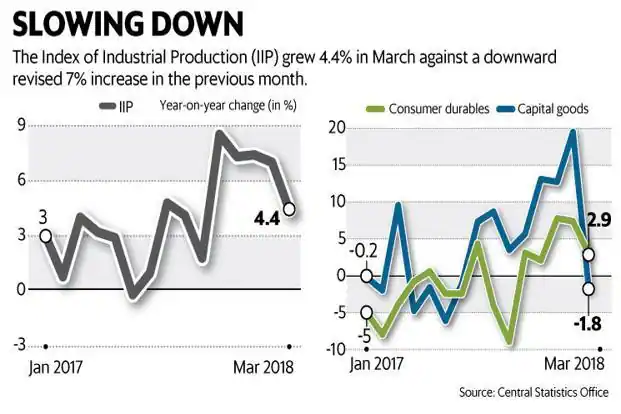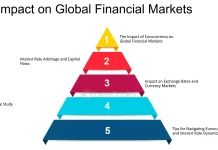The index of industrial production (IIP) saw a decline in annual growth from 5.6% in February to 4.9% in March. This followed a downturn in mining activity, as shown by data that the National Statistical Office (NSO) made public on Friday.
March 2023 saw a 1.9% increase in the IIP.
The increase in mining production slowed down to 1.2% in the month from 8.1% in the month before. However, production in manufacturing and power increased quickly, rising from 4.9% and 7.5% in February to 5.2% and 8.6%, respectively.
In all, the IIP increased by 5.8% in FY24 compared to 5.2% the year before.
According to data, the growth in output during March was recorded by eight out of 23 manufacturing sectors in the IIP, including computers, food goods, tobacco, textiles, leather, petroleum, and chemicals.
In the meanwhile, growth in the use-based categories slowed down during the month in primary goods (2.5%), intermediate goods (5.1%), infrastructure goods (6.9%), and consumer durables (9.5%).
The economy’s growing demand for investments and rising rural consumption may be seen in the acceleration of the rise in capital goods (6.1%) and consumer non-durables (4.88%).
The rise across segments was quite broad-based, according to Bank of Baroda chief economist Madan Sabnavis, which is encouraging. A rebound in consumer goods supported the notion that spending was increasing as the year came to a finish.
“Non-durables and durables have both performed well. This ought to continue because a healthy rabi harvest is anticipated. It should also stimulate expenditure in April and May, coinciding with the wedding season. It should be highlighted, nevertheless, that the base effect for growth was created by last year’s negative growth. Because there has been a push for PLI here as well, negative growth in electrical products is concerning,” he continued.
Similar sentiments were expressed by Rajani Sinha, chief economist of CARE Ratings, who stated that consumer non-durables output increased in March. This came after two months of contraction in a row, and the continuation of this trend will need to be watched in the months ahead.
“In FY24, the consumption scenario remained mixed, with rural demand continuing to lag and urban demand demonstrating resilience.” On the plus side for the overall consumption outlook are hints of improving rural demand, moderate inflation, and the prospect of a strong monsoon. Consequently, she continued, “a broad-based and sustainable improvement in consumption remains the key monitorable this fiscal year.”
But even though the bulk of the high-frequency indicators that are available showed growth in April—such as car registrations, the creation of GST e-way bills, petrol sales and electricity generation—chief economist Aditi Nayar of ICRA Ratings anticipates that IIP will slow to 3–4% in April, mostly because of the unfavourable base effect.





























